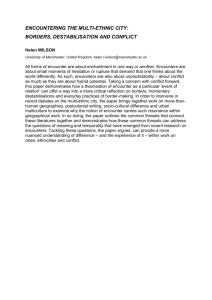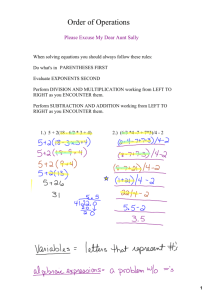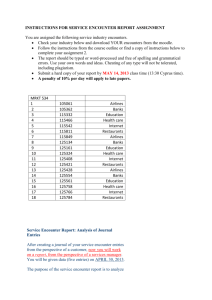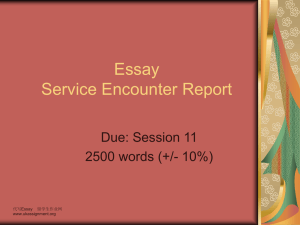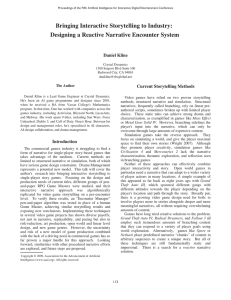21W. 730 Cynthia B. Taft Spring 2005
advertisement
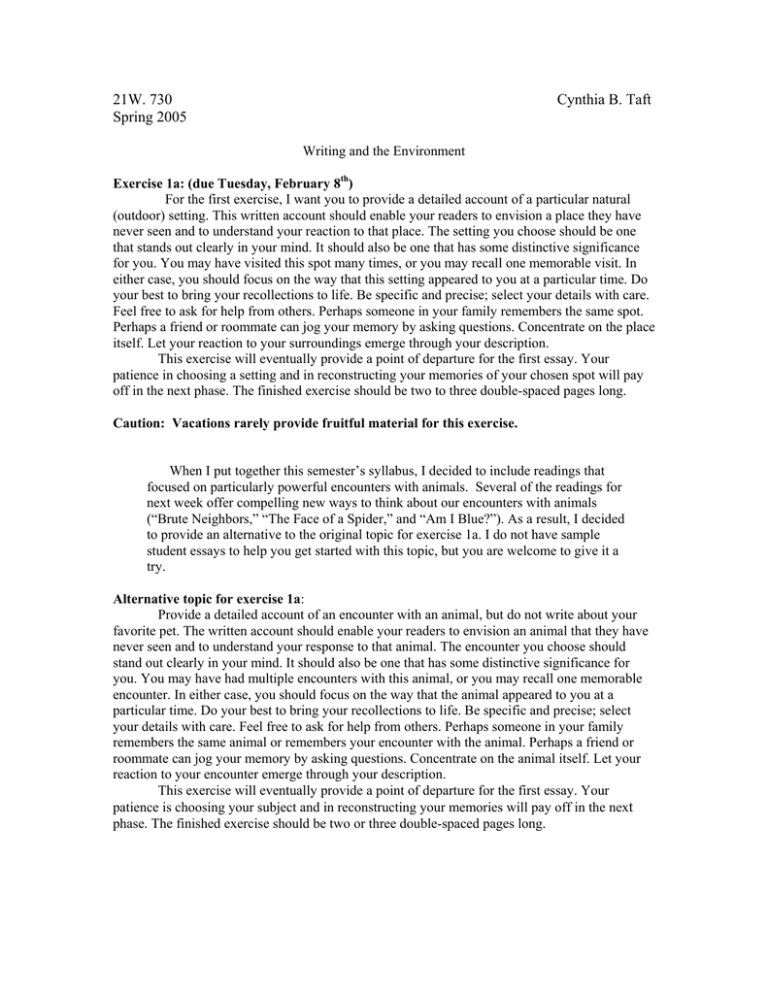
21W. 730 Spring 2005 Cynthia B. Taft Writing and the Environment Exercise 1a: (due Tuesday, February 8th) For the first exercise, I want you to provide a detailed account of a particular natural (outdoor) setting. This written account should enable your readers to envision a place they have never seen and to understand your reaction to that place. The setting you choose should be one that stands out clearly in your mind. It should also be one that has some distinctive significance for you. You may have visited this spot many times, or you may recall one memorable visit. In either case, you should focus on the way that this setting appeared to you at a particular time. Do your best to bring your recollections to life. Be specific and precise; select your details with care. Feel free to ask for help from others. Perhaps someone in your family remembers the same spot. Perhaps a friend or roommate can jog your memory by asking questions. Concentrate on the place itself. Let your reaction to your surroundings emerge through your description. This exercise will eventually provide a point of departure for the first essay. Your patience in choosing a setting and in reconstructing your memories of your chosen spot will pay off in the next phase. The finished exercise should be two to three double-spaced pages long. Caution: Vacations rarely provide fruitful material for this exercise. When I put together this semester’s syllabus, I decided to include readings that focused on particularly powerful encounters with animals. Several of the readings for next week offer compelling new ways to think about our encounters with animals (“Brute Neighbors,” “The Face of a Spider,” and “Am I Blue?”). As a result, I decided to provide an alternative to the original topic for exercise 1a. I do not have sample student essays to help you get started with this topic, but you are welcome to give it a try. Alternative topic for exercise 1a: Provide a detailed account of an encounter with an animal, but do not write about your favorite pet. The written account should enable your readers to envision an animal that they have never seen and to understand your response to that animal. The encounter you choose should stand out clearly in your mind. It should also be one that has some distinctive significance for you. You may have had multiple encounters with this animal, or you may recall one memorable encounter. In either case, you should focus on the way that the animal appeared to you at a particular time. Do your best to bring your recollections to life. Be specific and precise; select your details with care. Feel free to ask for help from others. Perhaps someone in your family remembers the same animal or remembers your encounter with the animal. Perhaps a friend or roommate can jog your memory by asking questions. Concentrate on the animal itself. Let your reaction to your encounter emerge through your description. This exercise will eventually provide a point of departure for the first essay. Your patience is choosing your subject and in reconstructing your memories will pay off in the next phase. The finished exercise should be two or three double-spaced pages long.
